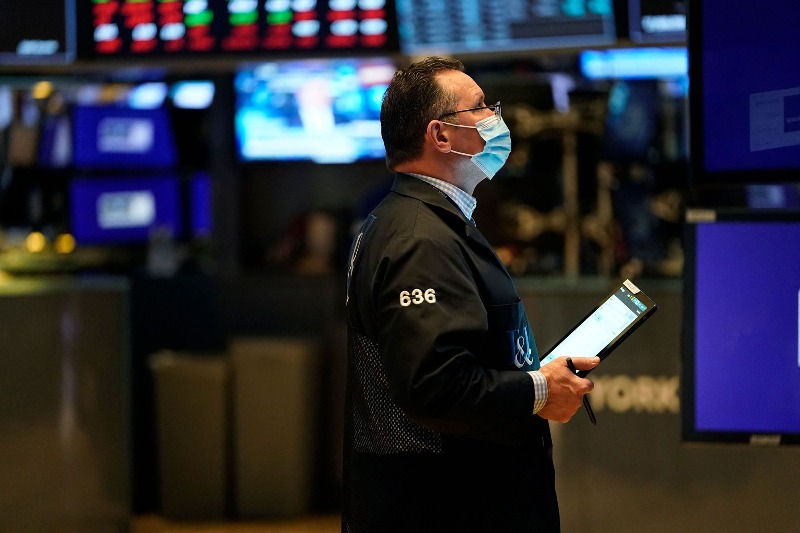
Asian emerging markets benefit from a Fed pause
Investors are unusually poised to buy in Asia’s emerging markets as the United States moves forward with its steepest interest rate hikes in a generation, betting that authorities can tame inflation without triggering the capital-flight chaos that has occurred in previous cycles. This comes at a time when the United States is moving forward with its steepest interest rate hikes in a generation.
Even while there isn’t a rally in progress, investors may have already stopped running for the exits because currency, debt, and equity markets have all leveled out.
On Thursday, July 28, beaten-down currencies like the South Korean won and the Malaysian ringgit rose, and stock and bond markets in Seoul, Kuala Lumpur, Jakarta, and Manila responded favourably to the most recent rate hike by the Federal Reserve.
The Federal Reserve has now raised interest rates by a total of 150 basis points in only two sessions, which is the fastest pace seen since the early 1980s. Overnight, the Fed increased rates by 75 basis points, which was in line with market forecasts.
At the level that it will be at in the middle of 2019, the target window for the benchmark funds’ rate is between 2.25 and 2.5 percent.
However, Chair Jerome Powell mentioned a slowdown in expenditure and production and hinted at a potential future reduction in the rate of rises. Traders have interpreted the comments as indication that a peak in US interest rates is approaching, and along with it, a top for the dollar and a trough for pessimism. Traders have also taken the words as confirmation that a top for the dollar is nigh.
Masafumi Yamamoto, the chief currency strategist of Mizuho Securities in Tokyo, stated that “these days developing market currencies, especially Asian currencies, have been – from my point of view – oversold. These days emerging market currencies.”
“Taking into consideration the fact that the equities market in the United States is on the ascent and that Powell’s recent comments have been less hawkish than usual, the economies of Asia and other emerging markets are benefiting from this trend, and the recovery of EM should carry on.”
There are indications coming from leading markets such as South Korea and Indonesia that the worst may be behind them. The yield premium over Treasuries has actually decreased throughout the course of this year, indicating that benchmark 10-year bonds in Indonesia have maintained their value rather well rather than collapsing.
The won of South Korea, which has been pummeled by equities outflows on fears that the country’s growth-exposed heavy industrial and high-tech manufacturing sectors will suffer as conditions tighten, has also taken a moment to catch its breath after experiencing significant damage.
After suffering a loss of around 9 percent for the first half of the year, the won was expected to have its best onshore session in nearly a month on Thursday. Additionally, the won has gained approximately 2 percent since reaching a 13-year low in the middle of July.
Related Posts
According to a strategist at the Bank of Singapore named Moh Siong Sim, “in six to twelve months’ time, when inflation comes off internationally and Fed tightening stops, it would support the won.”
The moves are a far cry from the beginning of the last Fed tightening cycle in 2013, when India and Indonesia were counted among the so-called “fragile five” emerging market countries, with assets on the front line of vulnerability to rising US rates. In 2013, the Fed began its last cycle of tightening monetary policy.
Indonesian stocks are poised for their best month since April, given that they are on track to at least not fall again, and the rupiah currency has dropped only 5 percent so far this year, despite the fact that the strength of the greenback has increased the US dollar index by around 11 percent.
In contrast, the Indonesian currency had a decline of 21 percent in 2013, the yield on the 10-year bond increased by 330 basis points, and stock prices remained unchanged despite an upswing in global equities markets.
Thu Ha Chow, head of fixed income for Asia at Dutch asset manager Robeco, stated that “what we’ve been pleasantly surprised with so far is that this time round the Asian markets have actually held up relatively well given the pressure that they’ve been under. This time round the Asian markets have actually held up relatively well given the pressure that they’ve been under.”
There is no shortage of risks, to be sure, and this is especially true considering that the central banks of several countries, most notably Thailand and Indonesia, are moving more slowly than the Fed in raising interest rates.
Both nations have not raised their policy interest rates from their epidemic lows, which has the potential to put downward pressure on their currencies, which could in turn make inflation and outflows worse. However, investors anticipate that both will move in the near future.
“When the tide runs out and you’re still not doing the right thing and raising rates, then all bets are off,” said Howe Chung Wan, head of Asia fixed income at Principal Global Investors in Singapore, in reference to Indonesia. “When the tide runs out and you’re still not doing the right thing and raising rates.”
He believes that inflation could exceed Bank Indonesia’s target band this year, which would necessitate an earlier increase in interest rates than officials now envisage. However, he went on to say that if this occurred in a market that was confident that inflation could be reined down on a global scale, then investors would have confidence.
“When we clear out the Fed, when we think inflation is peaking, here is where the EM investors are going to be, and this is where we want to be.”




